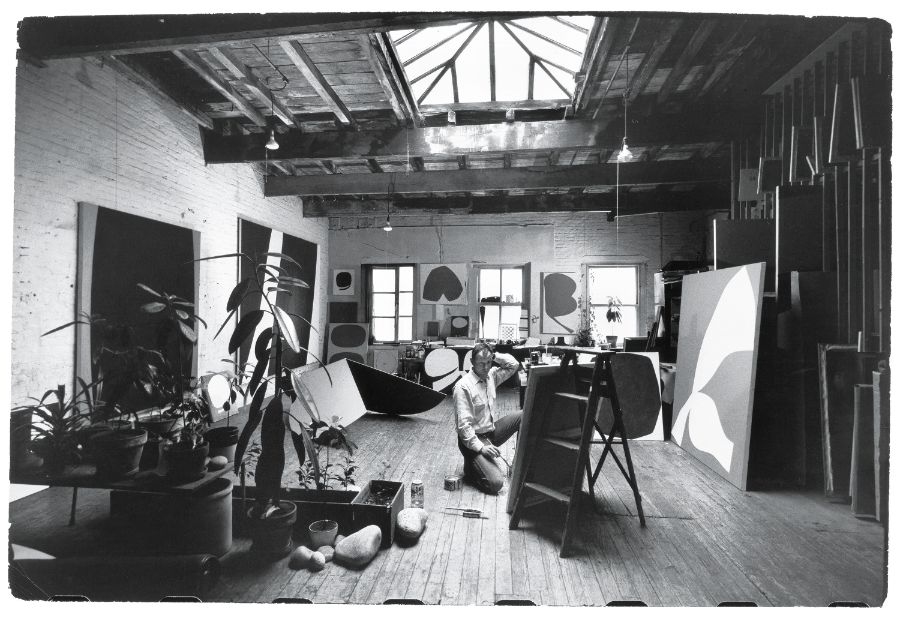Many New Yorkers have never heard of the short street in the Financial District called Coenties Slip (pronounced co-en-tees), which was once the busiest street for shipping commerce in Manhattan. Later, in the 1950s and 60s, its empty warehouses were home to unknown, developing artists who became some of the most important in American art. The rich treasure of this short, three-block long city street is now thoroughly unpacked in Prudence Peiffer's carefully researched new book "The Slip: The New York City Street That Changed American Art Forever."
In nautical terms, a slip is a water space dug between piers for arriving ships; New York City at one time had twelve slips that ran from the Battery up to the Brooklyn Bridge, which were dug out in the mid-seventeenth century by enslaved people when the Dutch controlled Manhattan. Coenties Slip was longer than most, running from Pearl Street—the oldest street in the city—down to the East River. In the late nineteenth century, the slips were filled in with dirt to make more land space. The shipping business in lower Manhattan faded to leave behind empty industrial lofts with open floor plans, where ship sails had been made from bolts of cotton duck. These abandoned lofts were discovered by artists who took up residence illegally, as they were zoned for commercial and not residential use. Ellsworth Kelly (pictured at top in his studio at Coenties Slip, photo courtesy Ellsworth Kelly Studio), Robert Indiana, James Rosenquist, Agnes Martin, Jack Youngerman, and the French actress Delphine Seyrig all lived in buildings along the Slip. Cy Twombly came to visit. Robert Rauschenberg and Jasper Johns lived around the corner.

"The Slip: The New York City Street That Changed American Art Forever" and author Prudence Peiffer, photograph by Charles Fulford
"The Slip held so many fascinating characters in art," said author Prudence Peiffer, who is the Director of Content at MoMA. "I couldn't believe that these artists were all living together. For this eclectic group of artists, it was this incredibly formative moment when they discovered what they wanted to be doing, and in doing that, we have some of the most incredible work of American art history."
In her book, Peiffer argues that the artwork was shaped and influenced by the place, which is rich in history. At one time, Coenties Slip buzzed with commerce, bustling with trucks, warehouses, and markets as ships unloaded goods. Herman Melville mentioned Coenties Slip on the first page of "Moby Dick." It was the hub of the flour trade in New York and one of the loudest, busiest spots in the city. "These slips were the center of New Amsterdam, the center of the city's trade and marketplace," says Peiffer.

Export and import traffic at Coenties Slip, New York, 1850–1900, Courtesy the Metropolitan Museum of Art, New York
By the time the artists arrived, the buildings were empty and a month's rent could be had for $45. Since they were industrial spaces, they didn't have proper kitchens or bathrooms with showers, so the artists improvised and brought in heaters and other appliances. Living conditions were simple. Jack Youngerman was concerned that in order to view his work, a gallerist would have to climb up four floors of an open staircase and then a ladder up to the attic. At night, the streets were deserted. Writer Mary Cantwell wrote it "was as bleak and barren as a desert." But the artists were happy to have a home together in their "collective solitude," as Peiffer terms it, where they could work alone and independently and also be part of a support network as they explored new forms of abstraction, Pop art, Minimalism, and textile art. In its desolate location, they considered it to be separate from New York. "We have little desire to go back into the city," said Jack Youngerman, while Agnes Martin observed that "Everybody groans about going into the city and sings when he comes back home."
Eventually, the buildings were demolished and the artists moved out. Soon after, laws were updated in New York City with the passing of residence zoning amendments that made it possible for artists to live and work legally in commercial loft spaces in Soho and Tribeca.
Today, Coenties Slip is much changed. The 3-5 Coenties Slip is the only original building to survive. Tall office towers rise all around, and FDR Drive cuts it off from the river. But with a little imagination, one can summon the ocean breezes, smell of the sea, and sounds of gulls that once blew through the neighborhood. Coenties Slip is a small microcosm of how New York City has evolved and adapted for centuries, where the shipping business and commercial lofts progressed into the financial industry as lower Manhattan changed and advanced. Whatever comes next, the place will always have been home to a diverse group of creatives who became some of the most notable American artists of the twentieth century.
